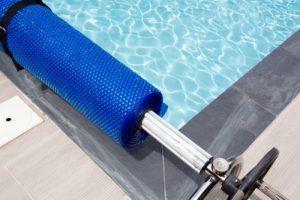 Maximizing Your Pool or Pond’s Energy Efficiency
Maximizing Your Pool or Pond’s Energy Efficiency
Pools and ponds are a great addition to any property, but they can be energy hogs if not managed properly. By maximizing your pool or pond’s energy efficiency, you can enjoy your water feature while also reducing your energy costs and environmental impact. Here are some tips to help you get the most out of your pool or pond, while using less energy.
1. Choose the Right Pump
Your pool or pond pump is responsible for circulating the water and keeping it clean. However, not all pumps are created equal. Choosing a high-efficiency pool or pond pump can reduce your energy consumption by up to 70%. Look for pumps with Energy Star certification or those that are labeled as “variable-speed.” These pumps can adjust their speed to match the needs of your pool or pond, reducing energy waste.
When selecting your pump, be sure to choose one that is appropriately sized for your water feature. An oversized pump will waste energy, while an undersized pump will not be able to adequately circulate the water.
2. Use a Timer
Running your pool or pond pump continuously is unnecessary and wasteful. Using a timer can help you control when your pump runs, reducing energy consumption. You can set the timer to run your pump during off-peak hours when electricity prices are lower. This also helps to reduce strain on the electrical grid during peak demand periods.
In addition to saving energy, using a timer can also help extend the life of your pump by reducing wear and tear.
3. Clean and Maintain Your Pump
Dirty or clogged pool or pond pumps require more energy to operate, which can increase your energy costs. Regularly cleaning and maintaining your pump can help it run more efficiently and reduce energy waste.
Clean the pump and its filters regularly, and remove any debris or obstructions from the area surrounding the pump. Have your pump serviced by a professional annually to ensure that it is working at peak efficiency.
4. Use a Cover
A pool or pond cover is more than just a way to keep leaves and debris out of the water. It can also help to reduce energy consumption by minimizing evaporation. When water evaporates from your pool or pond, it takes heat with it. By keeping the water covered, you can reduce heat loss and reduce the amount of energy needed to heat the water.
5. Optimize Pool or Pond Heating
If you use a heater to maintain the temperature of your pool or pond, there are several ways to optimize its energy efficiency:
– Lower the temperature setting. Every degree increase in temperature can increase energy consumption by 10-30%. Set the temperature to the lowest comfortable level to reduce energy waste.
– Use a pool or pond cover to reduce heat loss when the heater is not in use.
– Consider using a solar water heater, which uses the sun to heat the water. This can reduce your energy costs and your carbon footprint.
6. Use LED Lighting
If your pool or pond is illuminated, consider using LED lights instead of traditional incandescent or halogen bulbs. LED lights use up to 80% less energy than traditional lighting and can last up to 10 times as long. They also produce less heat, reducing energy waste from air conditioning.
7. Consider Wind-Breaking Measures
If your pool or pond is located in an area with high winds, it can increase evaporation and reduce energy efficiency. Consider adding wind-breaking measures such as fences, hedges, or walls to reduce wind exposure and keep water in the pool or pond.
In Conclusion
By maximizing your pool or pond’s energy efficiency, you can reduce energy consumption and save money while enjoying your water feature. Choose a high-efficiency pump, use a timer, clean and maintain your pump, use a cover, optimize pool or pond heating, use LED lighting, and consider wind-breaking measures. With these simple steps, you can enjoy a more efficient and eco-friendly pool or pond.

 Maximizing Your Pool or Pond’s Energy Efficiency
Maximizing Your Pool or Pond’s Energy Efficiency